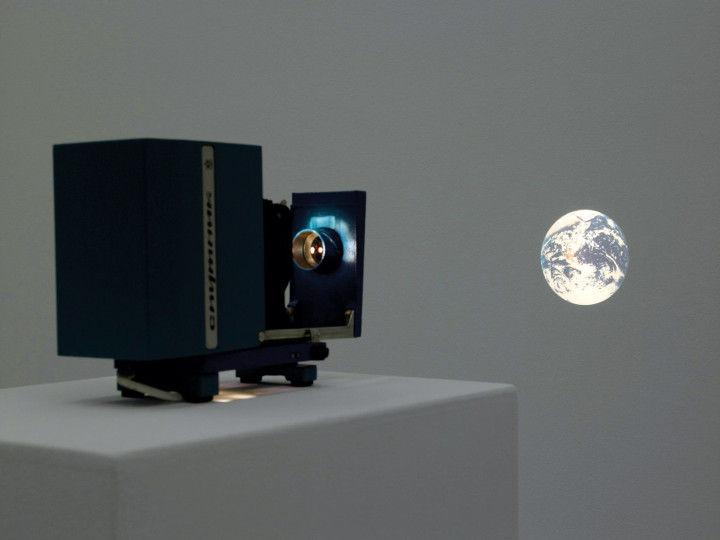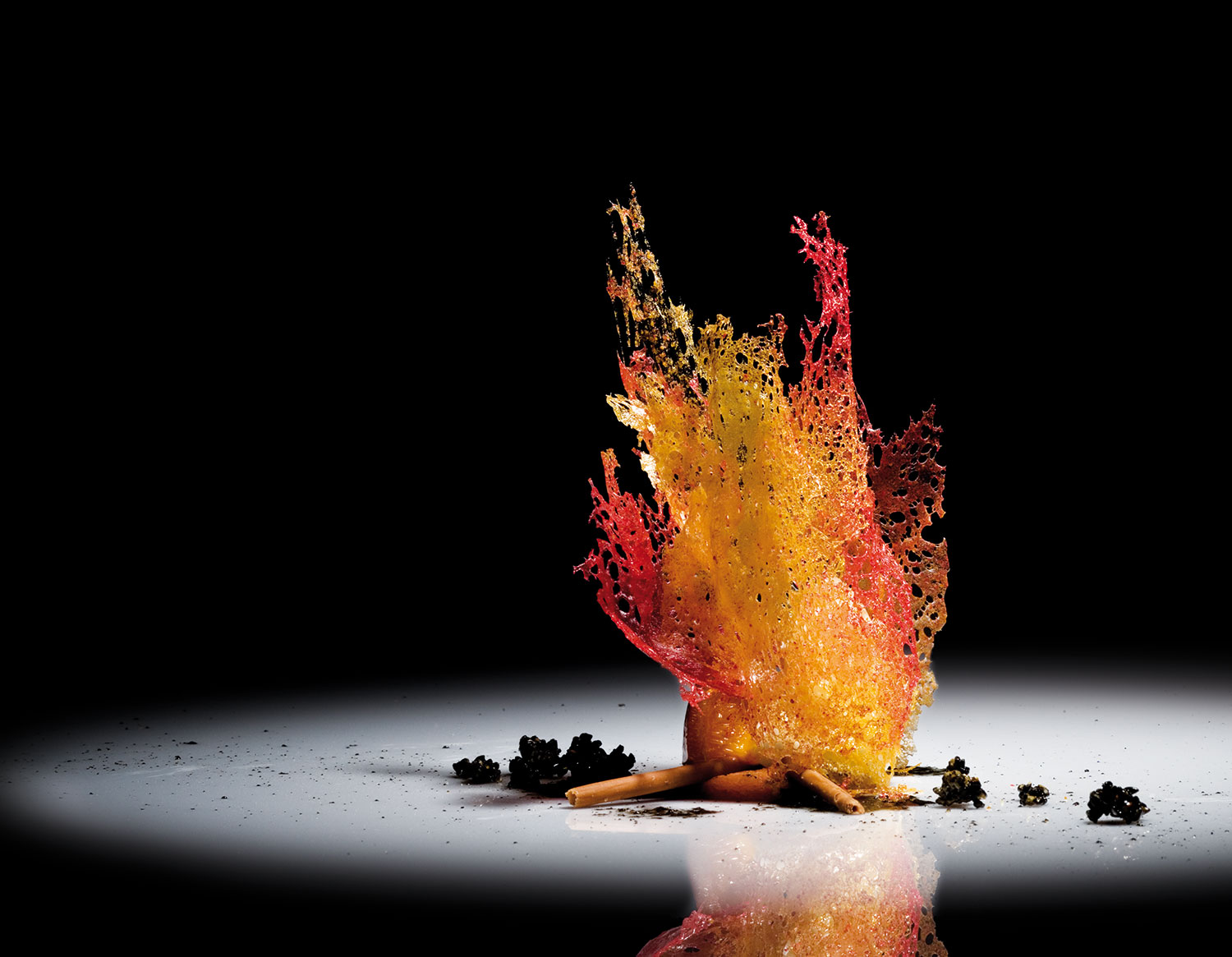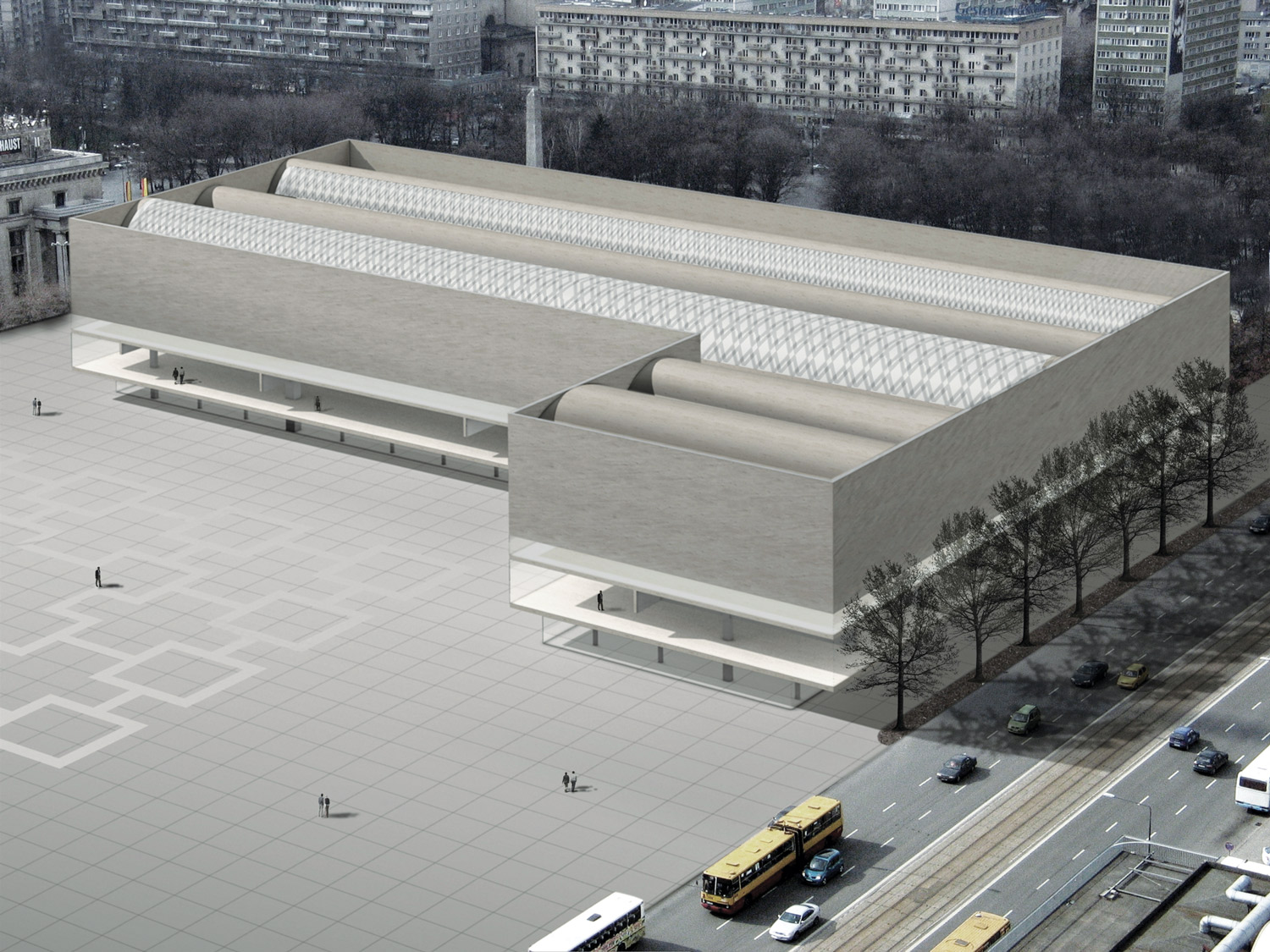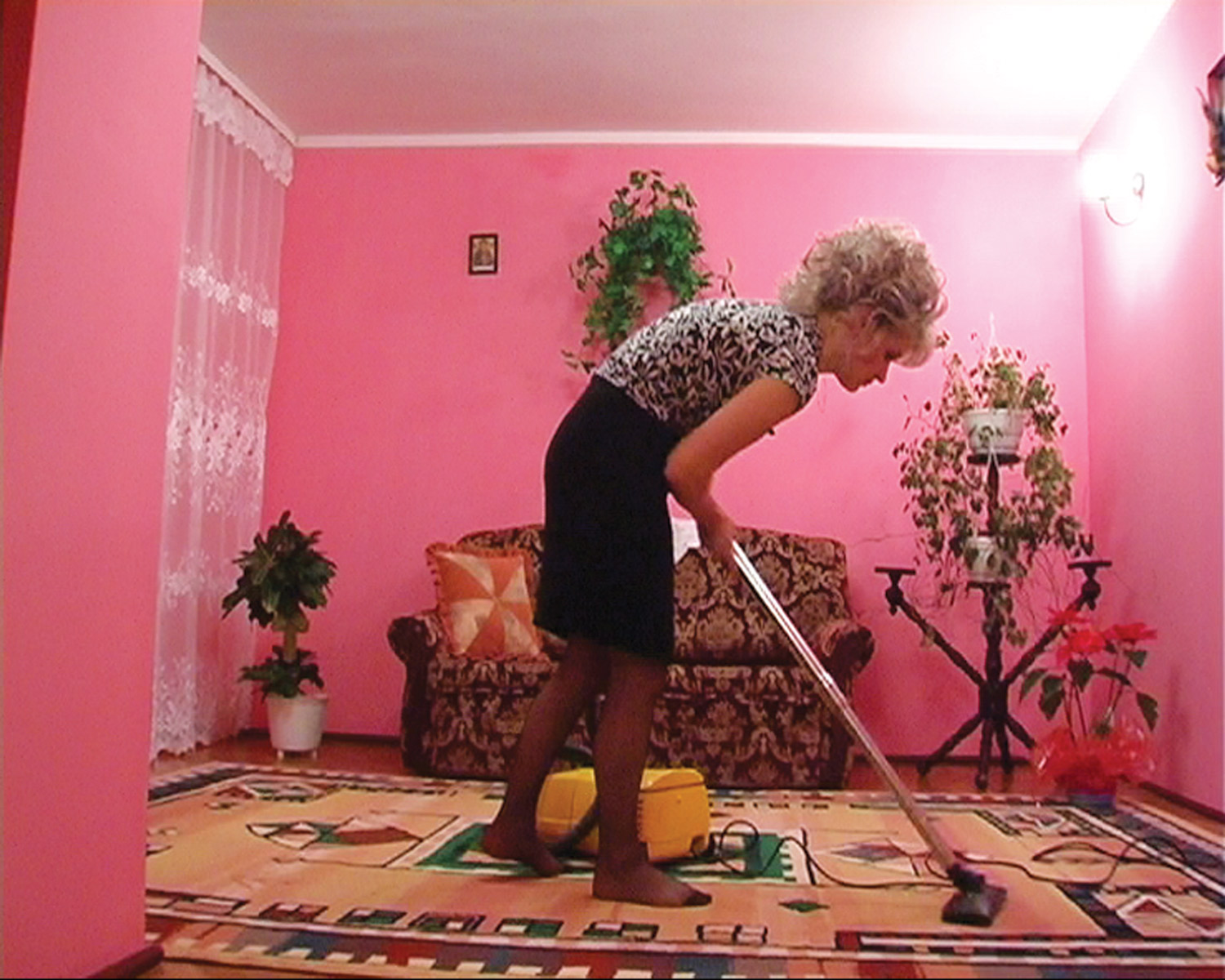
Deliberately eschewing a few key methods of dissemination synonymous with the communication of contemporary art and the promotion of an artist’s career — the artist insists on no biography and has a pessimism for interviews —, after glancing at Gintaras Didžiapetris’s oeuvre, one realizes that the artist’s work takes a similar path; it shares a similar air of resistance, while remaining almost silent, camouflaged even. Strikingly apparent from a first view or take of Didžiapetris’s work is the strange quality it imbues, rendering it somewhat difficult to pinpoint the generation from which he has emerged. Due to the specific apparatus that the artist uses — namely archaic equipment — and the work’s angle on the legacy of conceptual art, its particular aesthetic and at times its subject matter, which appears to be allied in many ways with Lithuania, the work could paradoxically be positioned in the past and equally the present day. This oscillation between diverging times is a central interest for the artist, and was the focus in his debut solo exhibition in an institutional context at Contemporary Art Centre (CAC), Vilnius, in 2007, condensed neatly by its title, “From Time To Time.” At just 22, Didžiapetris was the youngest artist to have a solo exhibition in the institution’s history. All of the works revolved around the exhibition’s core theme, albeit through several media and deviating concerns. The artist’s aim to have the appearance of the exhibition situated in both the present and past was, perhaps in part, a reaction to the style of the architecture of CAC, which is almost devoid of a specific identity in time, and even regarded by some as an alien. The ambivalence over whether the exhibition was specifically produced for the time, or perhaps a recreation of an exhibition that occurred decades previously, was staged and achieved perfectly. Sputnik (2007) typifies this very condition and consists of a vintage slide projector made in USSR. Didžiapetris presented the projector on top of a plinth, platforming it both physically and conceptually and drawing attention to the object’s status as a once prevalent form of equipment now on the verge of distinction. Its projected image shows a satellite picture of the Earth, in turn commemorating space victory, with the projector being the first man-made object taken into space. Ultimately, the piece draws together the past and the present, and mixes it with visions of the future. Displayed with equal elegance, Untitled (2007) involves two apparently identical postcards sandwiched between two pieces of glass, thus making both their front and reverse sides visible. On close inspection, one realizes that the image on both postcards, which depict a Lithuanian monument from exactly the same angle, has in fact been taken at two very different times, one in 1974 and the other almost ten years later, in 1982. This passage of time is barely noticeable, yet this inherent detection, or rather un-detection, is Didžiapetris’s focus, with the relevant information existing outside of the image, on the back of each postcard. It could be said that the work is closely allied to Michael Asher’s Caravan (1977-), which, on face value, endures little or no change but rather points to the shift of time through its own repetition. Perhaps a more significant precedent, however, is Christopher Williams’s photographs where the conceptual backbone and indexing of information literally occurs outside of the picture. Similarly, an index or a form of portrait of the passing of time is articulated in Untitled (2007), a piece beautifully displayed on top of a plinth under glass. An apparently minimal work, this piece saw the artist take a box of paper and place the paper back into the box, sheet by sheet. As the initial stack of paper was disturbed by hand, its cumulative height now reaches beyond the parameters of the box, giving the appearance that the box now contains more pieces of paper than it did originally. Not only existing as a trace of the set of actions carried out by the artist and, in addition, the time involved, Untitled perhaps exists as a trick, set out to confuse audience members and subsequently underline acts of perception and interpretation when in the search for a deeper and more clarified understanding. Highlighting the two aforementioned aspects is very much a primary concern in Didžiapetris’s work and has been played out in a number of other pieces, particularly Untitled (2007), a 12-inch vinyl record produced in an edition of 200, comprising a field recording taken on a ferry that navigates across the river Nerris in Lithuania. The record lasts as long as the actual journey, with the movement of the vinyl paralleling the movement of its audio. Also testing the audience in the exhibition at CAC was Minus One (2007), a work functioning again as a conceptual conundrum. The piece is a framed contract stipulating that the work will not be made if the collector purchases it. “What work?” one may ask. Of course, it does not physically exist any further than being a framed contract, but the artist injected more obscurity, confusing the audience further by not exhibiting the work in the actual exhibition at all — it was only referred to in the press release and detailed in the list of works. Significantly, while Minus One is physically excluded from the exhibition, the issues it raises and explores exist beyond its frontality: how artworks are purchased and how this might change an artwork’s meaning and understanding; furthermore, how a work’s cultural value and the career of the artist are affected through collecting. Perhaps the work is also a critique of the size and pace of the market and, relatedly, the arguable overproduction by many artists. It could also extend very pertinently to this very moment in which one is more cautious and reflective over what and how much is produced. The seminal and perhaps slightly contradictory proclamation by Douglas Heubler could certainly be the key historical precedent to all of this: “The world is full of objects, more or less interesting; I do not wish to add any more.”
A slightly divergent strand of Didžiapetris’s work and his thinking arises in response to an exhibition’s thesis, theme or concept. Didžiapetris’s work Gerard Byrne’s 1984 and Beyond at The Art Exhibition Hall, Vilnius (2008) addresses, as the title suggests, the Irish-based artist Gerard Byrne’s exhibition held at the CAC, Vilnius in 2007. After seeing the exhibition, Didžiapetris wrote a letter to Byrne requesting permission to document the exhibition, however as if the show had taken place in the past. On Byrne’s agreement, Didžiapetris removed all traces of the present in the exhibition, for example TV sets and other equipment that had been used, leaving only a series of black-and-white photographs. Shooting the image in color, lit only by natural light, it focused on the spatial qualities of the exhibition hall, which in fact made way for some clues, albeit subtlely, of the present day. Consequently, the documentation of the exhibition indexes two pasts: Byrne’s photographic portrayal of New York in the ’80s — which as an ongoing series stimulates the notion of time in itself — and the time at which Didžiapetris’s photograph was taken. The picture documents an imaginary, fictitious exhibition that never exactly took place and any clear representation of time is not completely devoid but instead confused. The use of other artists’ work is a key strategy also for Love Letters to Bethan Huws (2006), for which Didžiapetris took Love Letters, a postcard edition by Bethan Huws, mass-produced by K21, Düsseldorf, onto which he signed Huws’s name, transforming it into an open love letter reworked back to the artist.
Continuing to shape works with situational intent, after being invited to participate in an exhibition about exclusion — “One of these things is not like the other things,” curated by Raimundas Malašauskas — Didžiapetris produced a work which did just that: a framed drawing placed against a wall in the exhibition space designed in such a way as to remain invisible, accompanied by a sound piece played outside of the exhibition’s opening hours. Addressing the concept of the exhibition literally, the piece, like most of his works, exists through rumor and could be overlooked entirely.
Registering Didžiapetris’s work, or more correctly, the difficulty laid down by the artist, is something of a constant. At the very heart of his oeuvre is a conceptual mysticism, and the way in which he approaches his work and his career enables his distinctiveness and uniqueness. Didžiapetris is very careful with what he produces and exhibits; while insisting on questioning the shows he is invited to participate in, he more pointedly questions a work’s subsequent mediation. With works existing only in exhibition catalogues, taking the form of talks, and those mentioned above — all unconventional media that further question the object of art — it appears as though he is taking audiences on a journey, also through a career that is difficult to trace. Where time is blurred and where conventional modes of perception and interpretation of artworks are thrown into question, Didžiapetris gives a platform to the unknown and crucially gives space for conceptually induced works to remain unresolved yet illuminated through time.





